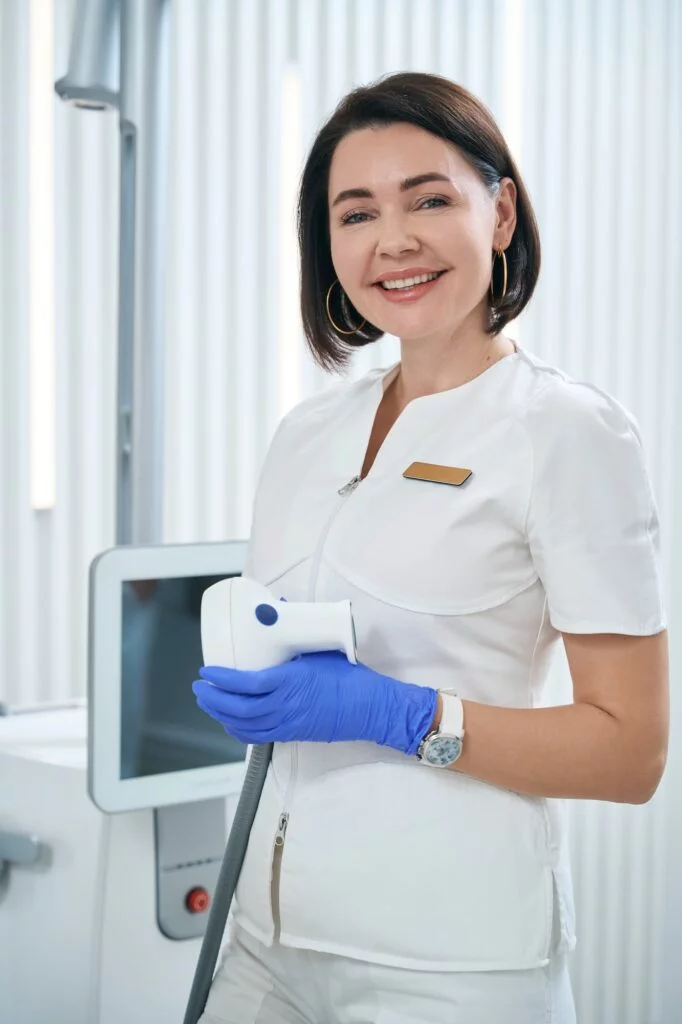An upper endoscopy – which is usually called just an “endoscopy” – is a procedure that a doctor performs to examine the upper gastrointestinal (GI) tract, which goes all the way from your mouth through the esophagus and stomach to the top of your small intestine. (A lower endoscopy is a colonoscopy.)
The purpose of an endoscopy is to find out what is causing your symptoms, so your doctor can make a diagnosis and treat the problem. During an endoscopy, you will be placed under light sedation so you will be asleep during the procedure. The endoscope – a thin, flexible tube with camera functionality on the end – is inserted through the mouth and passed down the throat and esophagus for the physician to view the upper GI tract.
An endoscopy is commonly done to diagnose a range of upper GI disorders, such as chronic acid reflux, stomach ulcers, gastroesophageal reflux disease (GERD), and Barrett’s esophagus. The good news is that an upper endoscopy can often eliminate the need for surgery by determining the root cause of the issue, so effective medication – or another treatment – can be administered.
Let’s talk about what you can expect during and after an endoscopy, and where you can go throughout California to see a world-class gastroenterologist who can efficiently diagnose your digestive issue – and give you a recommendation and possibly a prescription to help get your GI tract back to acting and feeling normal again.
What Happens During an Endoscopy?
An upper endoscopy usually doesn’t need a “prep” unlike a colonoscopy, only that you do not eat or drink anything after midnight the morning of the procedure. Since an endoscope passes down the throat, esophagus, and stomach, any food that was consumed too soon earlier could cause you to aspirate during the procedure – where food and drink could get into the lungs. That is why endoscopies are rescheduled if the patient happened to consume food or drink beforehand.
For the endoscopy, you will be asked to lie down on your left side. The doctor will give you a mild sedative and use a numbing spray into your mouth. You will immediately fall asleep, and the gastroenterologist can then perform the procedure.
The endoscope will be inserted into your mouth and passed down your throat, and into your esophagus and stomach. At one point, the doctor may collect tissue samples for a biopsy, to test for diseases such as cancer of the digestive system or scarring of the tract.
The doctor can also perform treatments during the endoscopy, such as treating a bleeding stomach ulcer, removing polyps, and widening a narrow esophagus. Throughout the procedure, the doctor is able to visualize the upper GI tract through images transmitted in real-time from the camera to a monitor there in the room.
After the endoscopy is completed, someone else will need to drive you home since you will still experience some effects of the sedative. It is only normal to experience a sore throat, cramping, abdominal bloating, and gas. Any other symptoms should be reported to the gastroenterologist who administered the exam.
Board-Certified Gastroenterologists Throughout California
The highly skilled and experienced gastroenterologists at Genensis Healthcare Partners are here to help you achieve excellent digestive health. We can perform a range of tests, including an upper GI endoscopy, to shed light on your symptoms and get you the treatment you need for much-needed relief and better digestive health.
Being a large gastroenterology practice, we offer an alternative to this test, such as the upper GI X-ray examination – which utilizes barium. To find out more about your testing options or to schedule a consultation, call our office nearest you or fill out our convenient online form to request an appointment with one of our GI doctors. We look forward to seeing you here!



